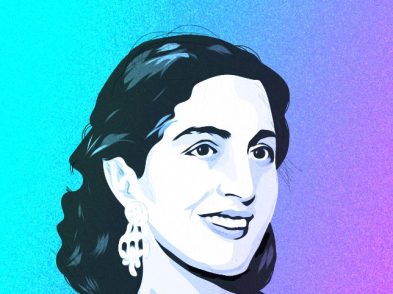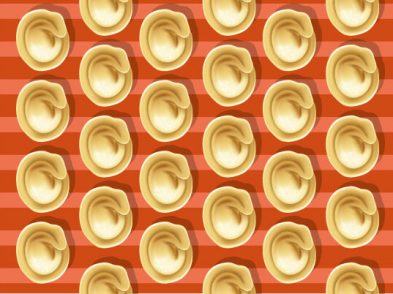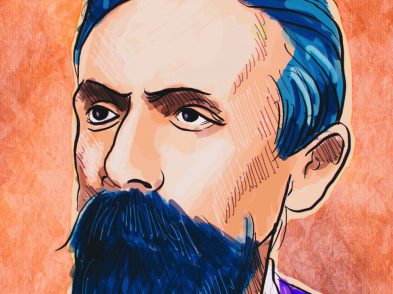The famous German scientist and father of the theory of relativity, Albert Einstein, was two years older than his only sibling, his sister, Maria. Known to family and friends as Maja, she not only physically resembled him but as children they were best friends. They would always remain close—when, in 1939, because she was Jewish, she was forced to flee the Tuscan villa that her brother had so often visited, she sought refuge with him in America. She had to leave behind her husband, Paul Winteler, and their home at Quinto, near Sesto Fiorentino, where they had lived for nearly 17 years. She would never see either of them again.
Born in Munich on November 18, 1881, Maja Einstein went to elementary school there until her father, a somewhat hapless businessman, moved the family to Milan, where she attended the German International School, while her brother remained behind in Munich to finish school. After attending a teachers’ program in Aarau, Switzerland from 1899 to 1902, she earned a degree in Romance languages and literature in Bern in 1909. A year later, she married Paul Winteler, a lawyer. Years before, after he failed his entrance exam to the Zurich Polytechnic Institute, Albert had been sent to Aarau to study under Jost Winteler, Paul’s father, and had lodged with the family.

In 1911, Maja and Winteler moved to Lucerne, where they lived until 1922, when they bought the property at Quinto. They loved the villa, with its garden and huge fig tree, olive trees, vegetable patch and chicken run, calling it Villa Samos, after the beautiful Greek island.
Villa Samos soon became a ‘salon’ for scholars and, in particular, artists. Winteler fancied himself a painter, although he was not as talented as his wife who was an accomplished pianist. Among their frequent guests was German painter Hans-Joachim Staude (1904–73). During his first stay in Florence, Staude lived in rented rooms in via Guicciardini, but he was soon befriended by the Einstein-Wintelers, who became a second family. Years later, his daughter, Angela Staude Terzani (wife of journalist Tiziano Terzani), recounted her father’s reminiscences about the villa: ‘a special place, a centre for intellectuals and cultured Jews, also visited at the beginning of the ‘30s by Albert Einstein, who on that occasion gave his sister a piano as a present.’ Before her flight from Italy, Maja gave Staude the same Blüthner piano ‘on which they had played together so many times.’
On his visits to Florence, Albert also spent time with his first cousin, Robert Einstein, and his family, who lived in corso dei Tintori during the winter and in the summer at their country house, Il Focarfo, at Troghi, near Rignano sull’Arno. A caption to a watercolour by Robert’s young niece, Lorenza Mazzetti, provides a glimpse into those family visits: ‘This is a portrait of Uncle Robert’s cousin, Maja’s brother. His name is Albert Einstein. He lives in America and when he’s there, he works as a scientist, and when he comes here, he goes on the swing.’
Those idyllic days were numbered. In 1938, Mussolini enacted racial laws under which Jews were banned from many professions, such as banking, government and education, and forbade marriage to Italians. Their property could also be confiscated. Fearing much worse was to come, Maja immigrated to the United States, joining her brother in Princeton, New Jersey. Knowing that he would not be able to enter America on health grounds, Winteler took refuge with relatives in Geneva. The couple planned to reunite after the war.
Those of the family who remained in Florence suffered terribly. In what may have been a personal attack designed to cause Albert Einstein pain, on August 3, 1944, the German SS, then among the forces occupying Tuscany, rounded up Robert’s wife, 56-year-old Nina Cesarina Mazzetti, and his two daughters, Luce, aged 27 and Annamaria Cicì, aged 18; they tortured and then shot them and set fire to the villa. Robert escaped the bloodbath but, unable to bear his terrible sorrow, committed suicide a year later. He is buried next to his wife and daughters at the Badiuzza alle Corti cemetery. Those responsible for the massacre were never identified.
The postwar reunion that Maja Einstein and her husband envisioned was never to be. Maja suffered a stroke in 1946, became bedridden and could no longer travel. She died on June 25, 1951, in the care of her brother. The following year, Winteler died in Switzerland.
It is not known whether Paul Winteler ever managed to return to Villa Samos, but it is believed that the property still remains in the hands of his descendants.
Albert Einstein may have relaxed when in Florence, but surely he was aware that a great scientist of an earlier era, Galileo Galilei, lived and worked in Florence. Indeed, Florence is home to an important international scientific institution, Florence’s Museo Galileo: just steps from the Ponte Vecchio (piazza dei Giudici 1) and recently renovated, it is a great place to visit. Its focus is on the history of science, with a collection of scientific instruments and an agenda of research, documentation and dissemination of the history of science and Italy’s rich technical and scientific heritage.
For more information, see www.museogalileo.it.








